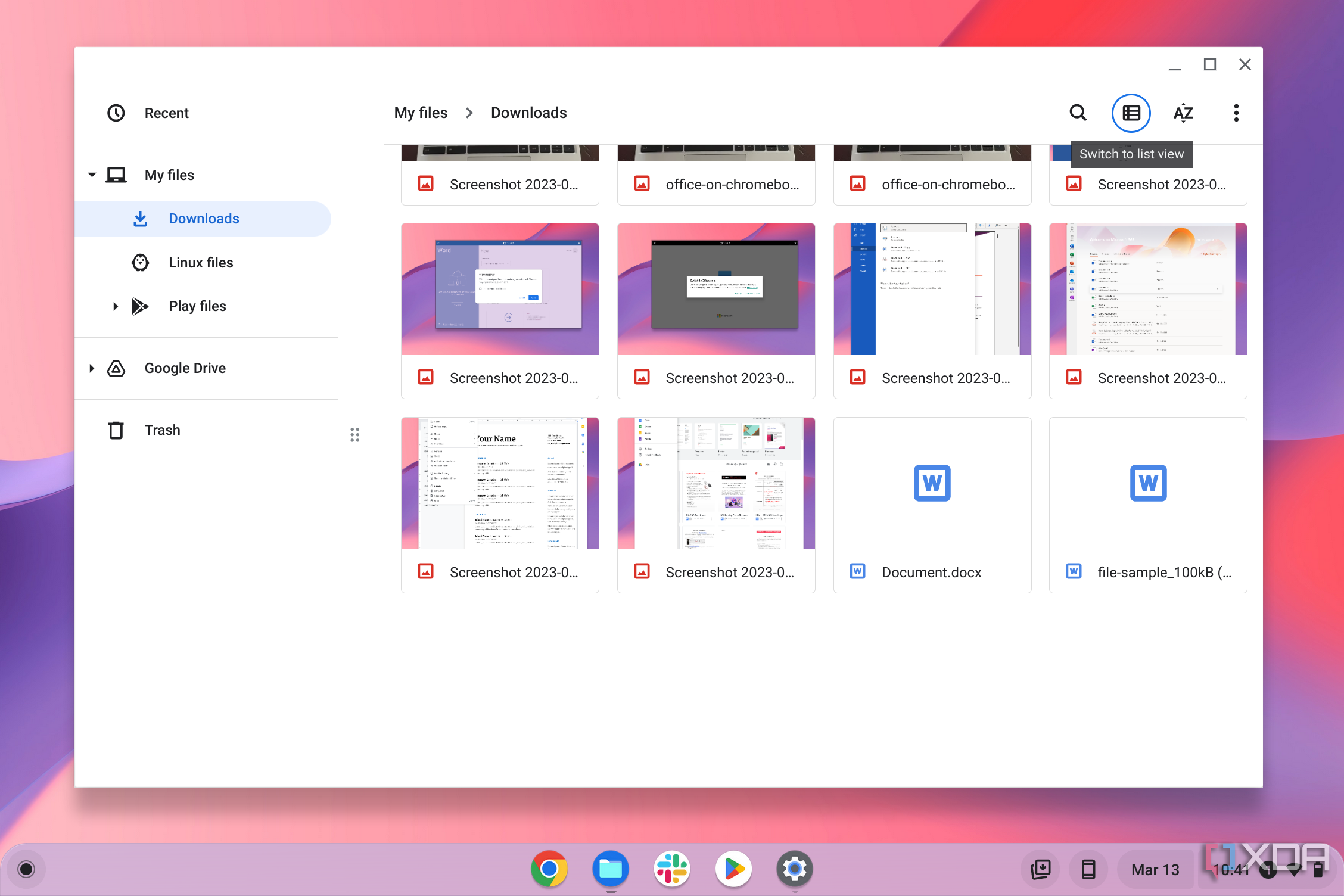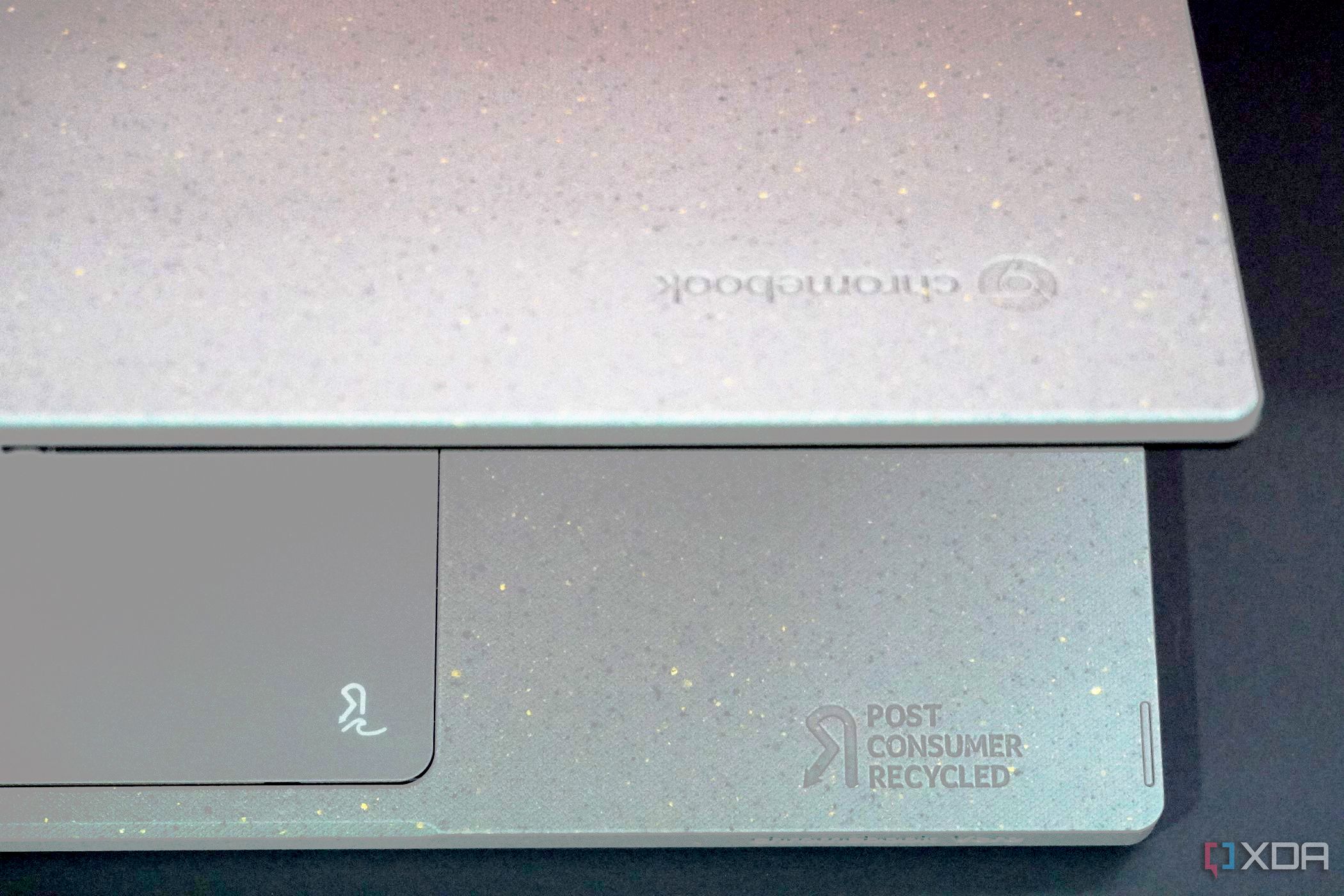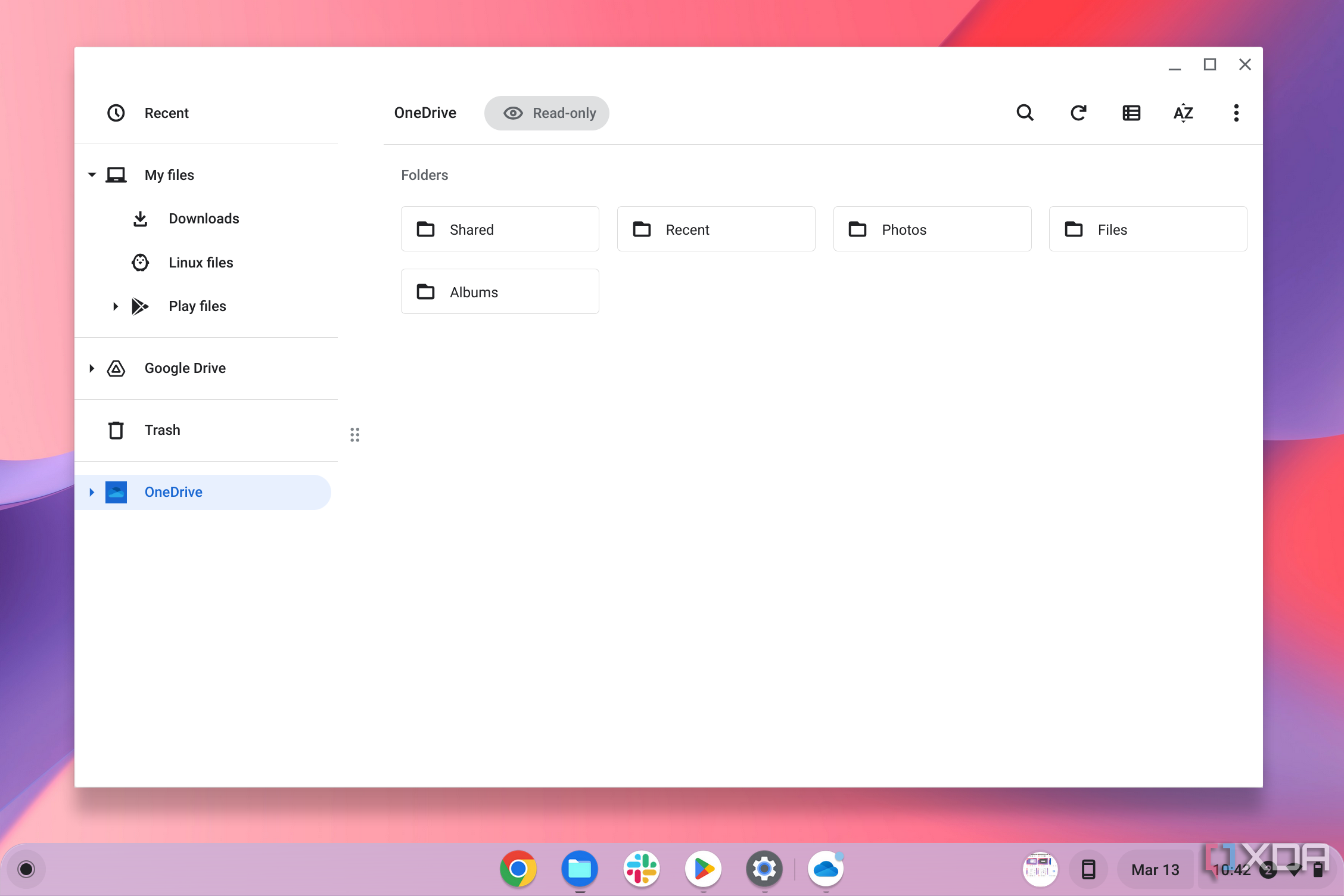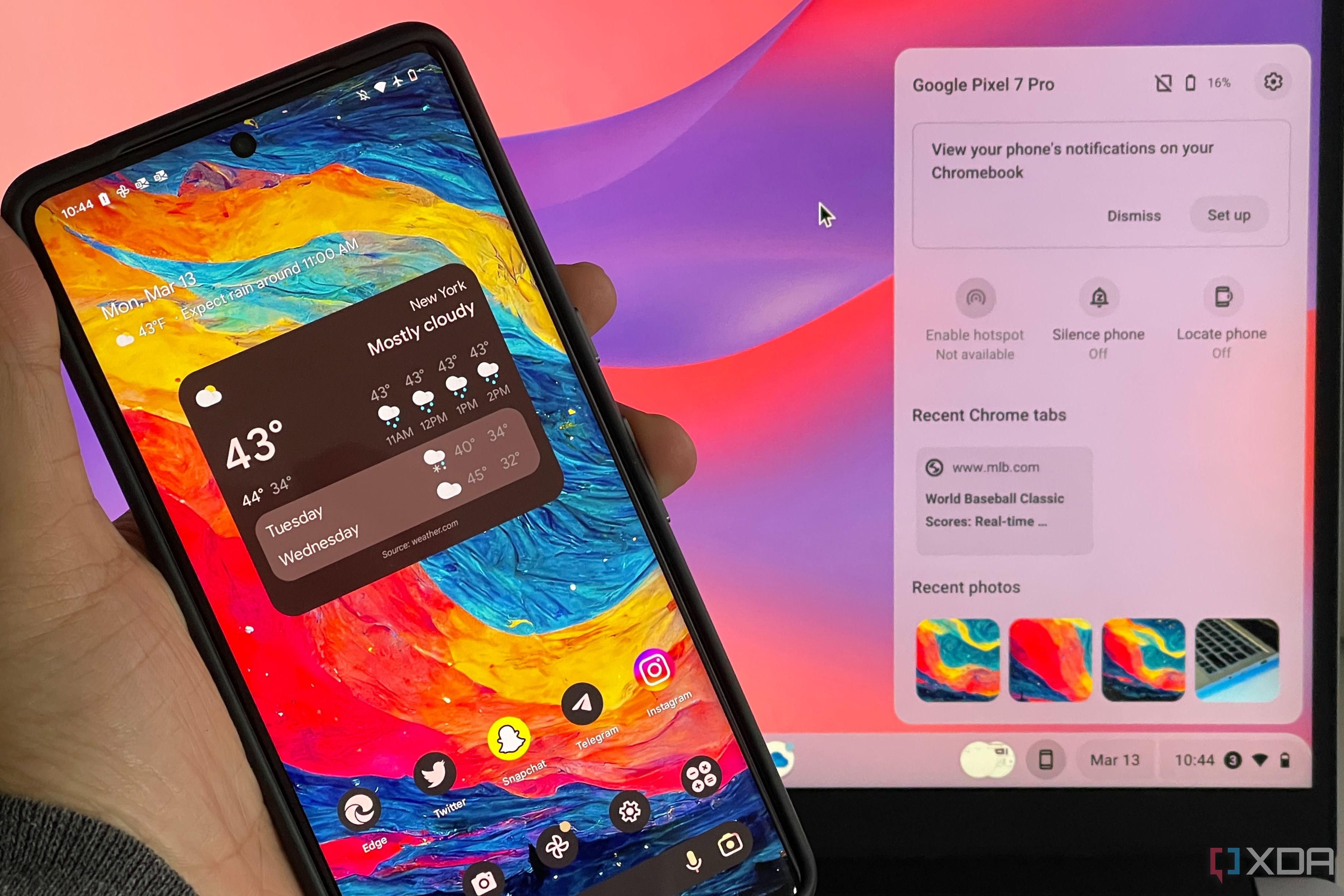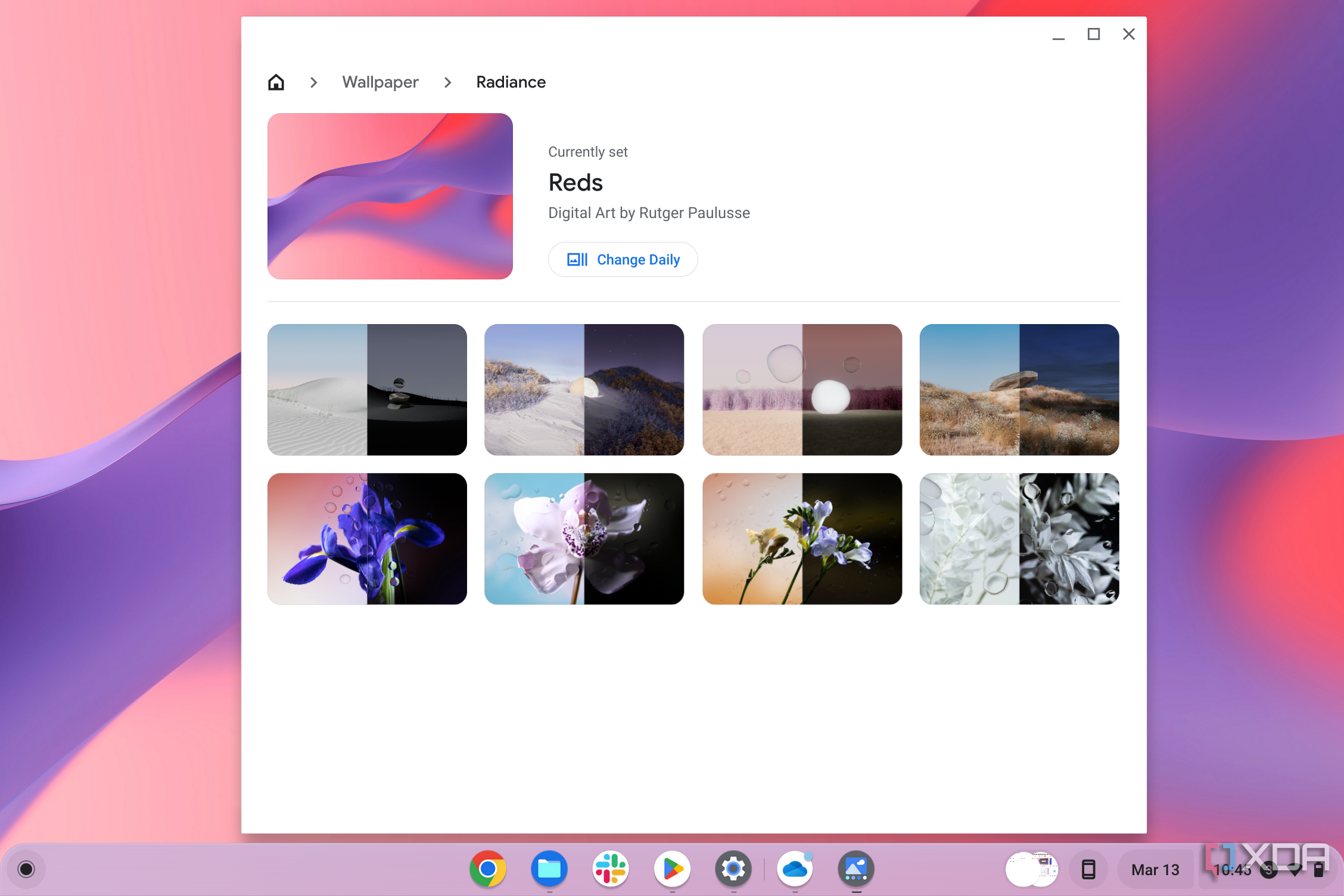As someone who uses multiple operating systems as part of my work, I have my preferences as to which one to use. There are a lot of great Chromebooks, ChromeOS tablets, and Windows laptops out there, but I haven’t used a Chromebook much because the experience has always been so limited. Windows has always felt better for things like multitasking, connecting to other cloud services from Apple or Google, and even using your Android phone with the operating system.
So, using ChromeOS more in the past year, I’ve found a few areas that could use some improvement. Yes, Google has finally addressed the fact that Chromebooks can’t be used for gaming or video editing, but there’s still more work to be done. There are five things in particular that I hope Google can tweak in the future.
1. Fix the Files app
Topping the list is an overhaul of the Files app in ChromeOS. For now, the ChromeOS default Files app experience is pretty basic. You get to the Downloads folder, and that’s pretty much it. If you want to organize your files by Pictures, Videos, and Documents, you will have to manually create subfolders in the Files app and then navigate to them using the sidebar.
Windows 11 File Explorer does it for you automatically with areas for photos and videos. It even gives you a visual indicator with unique folder icons when it’s time to save or download something in an app. I wish this was the case on my Chromebook. It will make navigation and finding files much faster.
On top of this basic change, there are some additional features from Windows 11’s new File Explorer that may be useful in ChromeOS. It would be nice to see a tabbed experience, where you can open tabs in the Files app for your different folders. In my workflow where I open a lot of images, this will help reduce the need to open multiple windows when searching for a specific file. I can get all the folders I need up front in one browsing session. Even macOS has this feature, and you can add it to Linux pretty easily, so it’s time for Google to catch up!
And maybe Google can find a way to categorize or group files, so you can find them quickly. MacOS does a good job with the tags feature and even a feature that lets you add color to the file. Google Drive already allows you to change the color of a folder for better identification, so it would be nice to see this ported to ChromeOS in some way.
2. Traditional right-click with a trackpad, please
Chromebooks are simple and effective, but one of the hardware issues I hate is the way right-clicking on the trackpad works. You can configure ChromeOS so that right-clicking works by clicking on the trackpad with two fingers on the right side, but this isn’t entirely natural for Windows users, as standard right-clicking doesn’t require two fingers. It just takes a little extra thought.
As a workaround, you can simulate a normal right-click on the bottom of the trackpad by first pressing substitute Then clicking to the right of the trackpad, but that required an odd keyboard combination. Why can’t we right click like we do in other operating systems? After all, you can do this just fine if you have an external mouse connected, so this seems to be just a trackpad issue with the device.
3. Deeper integration with other cloud services
For now, Google Drive is the best way to go if you want to use cloud storage on ChromeOS. It makes sense that Google Drive is a Google product, but I’d like to see deeper integration with other cloud services as well. Although you can already download Microsoft OneDrive and view your favorite files from OneDrive directly in the Files app, you can only read those files. OneDrive on ChromeOS doesn’t have write permissions, which means you can’t save files there through the Files app.
I know Google is working with Microsoft on Integration of the Office application into the Files application, which makes it easier to open Office files on a Chromebook, so this may change soon. There is no need to be competitive either. Windows 11 lets you use other cloud services, and so does macOS. It’s time for Google to wake up and stop being a closed system.
4. Deepest Android integration with Phone Hub
Phone Hub is a very useful feature on Chromebooks if you own an Android phone. You can check your cellular connection and battery, silence the phone, browse Chrome tabs from Android on your Chromebook, see notifications, and download recent photos.
But you can get some missing features in the Windows 11 Phone Link app. On Microsoft’s operating system, you can completely copy Android phone apps (select phones only) and make phone calls on your PC. Google owns Android and ChromeOS, so I’d like to see this functionality come to the Phone Hub as well. It will make it easier for you to avoid taking your Android phone out of pocket while using your Chromebook for work.
5. More ways to customize Chromebooks
Windows and macOS are two highly customizable operating systems. You can modify wallpapers and, in the case of Windows, download an app like Start11 that gives you complete control over aspects of the operating system such as the taskbar and start menu. This is something I’d love to see on ChromeOS.
For now, you can only customize your Chromebook by modifying the Google Chrome theme and wallpaper, moving the dock, or changing the way apps are listed on the shelf or in the launcher. There are many ways you can tweak Android — themes, icon packs, alternative launchers — and maybe one day that will come to ChromeOS. I’d like to see a way to change the color of the shelf, change the app icons, and even make the shelf a different size or shape. Why not give users the ability to change custom wallpapers every day instead of relying on Google’s built-in wallpapers?
While I’d love to see these features implemented in ChromeOS, I understand that the system is supposed to be more lightweight than Windows or macOS because it’s browser-based. It doesn’t need the complexity you see in other operating systems. It may take some time for these changes to be implemented, but there is hope that it will be possible. Google, just like Microsoft with Windows, is always listening to feedback. Whether it’s support for a video editing app like LumaFusion or even Steam in beta, Google has moved ChromeOS pretty far since it first came out. Knowing that the material redesign will be done soon, I’m looking forward to the next step.
[ad_2]


